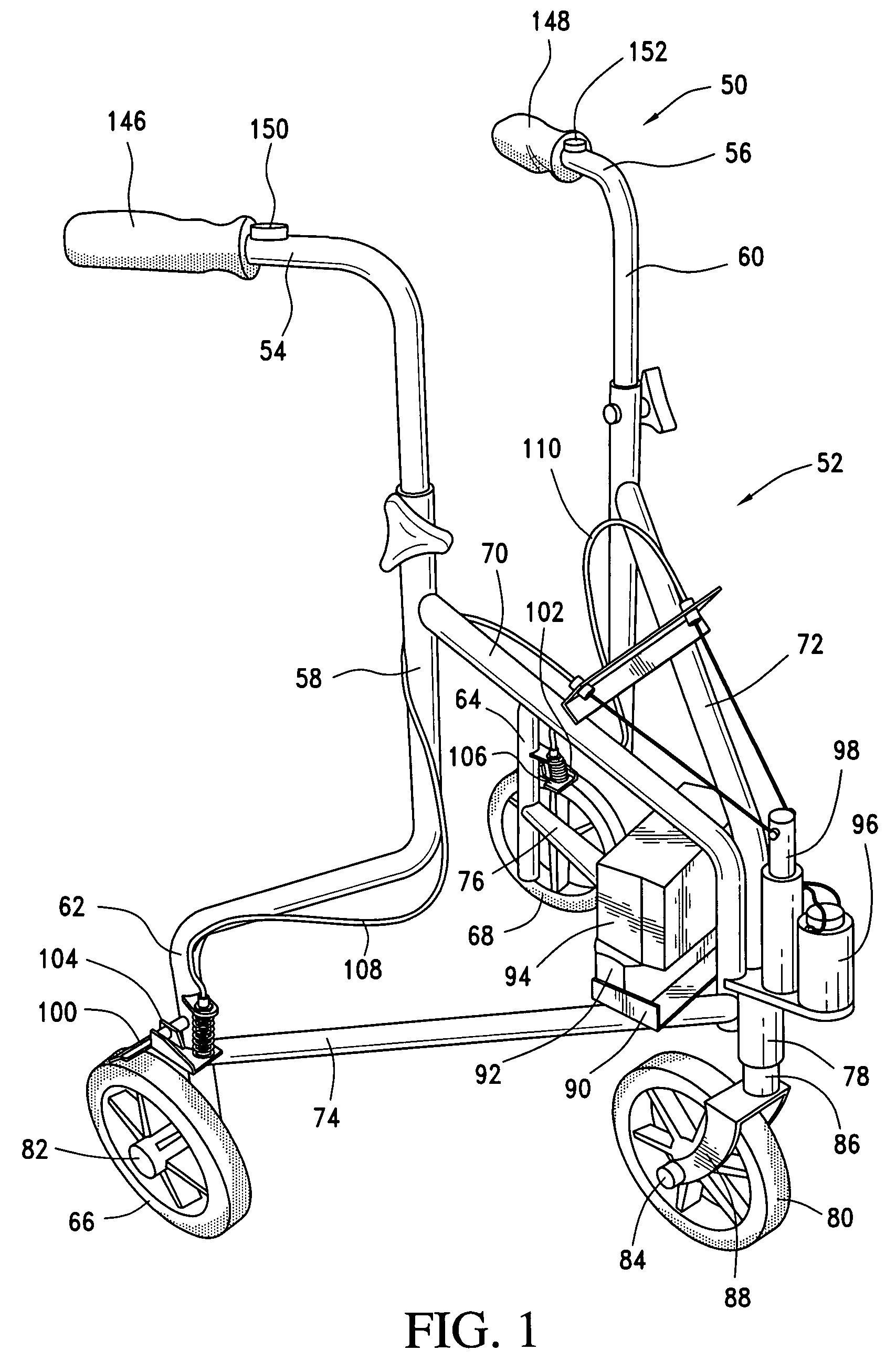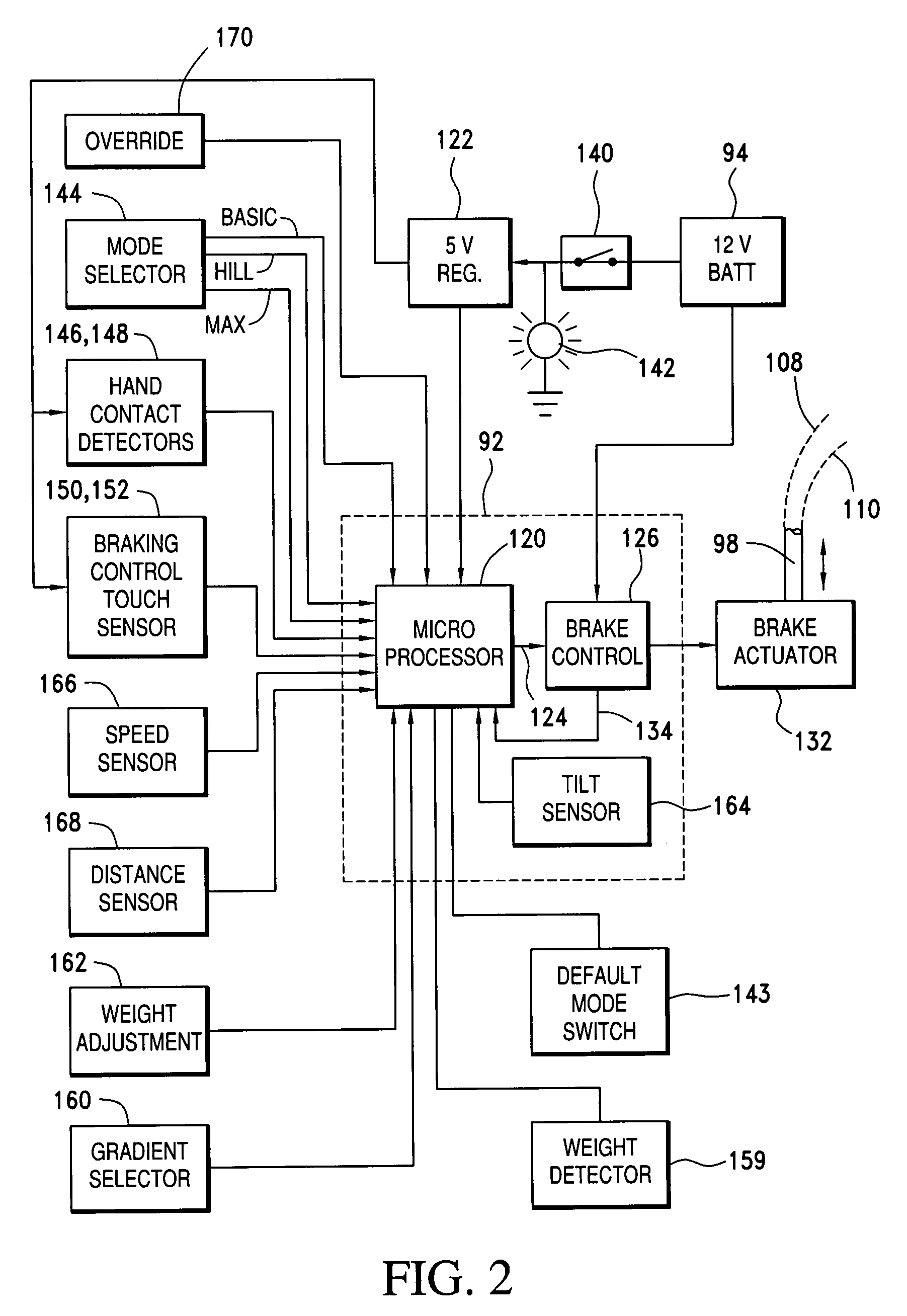Electronically controlled brakes for walkers
a technology of electric control and brakes, applied in the direction of brake systems, mechanical devices, transportation and packaging, etc., can solve the problems of walking, as executed in the prior art, not being stable, and being difficult to lift, and achieve the effect of convenient operation
- Summary
- Abstract
- Description
- Claims
- Application Information
AI Technical Summary
Benefits of technology
Problems solved by technology
Method used
Image
Examples
Embodiment Construction
[0031]Walkers and other devices for assisting individuals who are infirm, or who have medical conditions that limit their mobility, have been available for many years, and have been of great help to large numbers of people. Such devices are commercially available in a variety of configurations to provide easily maneuverable walkers wheel chairs and the like. As discussed above, the present invention is described in conjunction with walkers, but may be adapted to other motion assisting devices, as well. As described in the afore-mentioned U.S. Pat. Nos. 5,636,651 and 5,794,639, walkers may be provided with both mechanical and electrically operated brakes to assist in controlling their movement. The present invention is directed to improvements in control systems for such devices.
[0032]The invention is illustrated in FIG. 1 in combination with a three-wheeled walker, as illustrated at 50, and in combination with a four-wheeled walker as illustrated at 51 in FIG. 3, wherein common elem...
PUM
 Login to View More
Login to View More Abstract
Description
Claims
Application Information
 Login to View More
Login to View More - R&D
- Intellectual Property
- Life Sciences
- Materials
- Tech Scout
- Unparalleled Data Quality
- Higher Quality Content
- 60% Fewer Hallucinations
Browse by: Latest US Patents, China's latest patents, Technical Efficacy Thesaurus, Application Domain, Technology Topic, Popular Technical Reports.
© 2025 PatSnap. All rights reserved.Legal|Privacy policy|Modern Slavery Act Transparency Statement|Sitemap|About US| Contact US: help@patsnap.com



